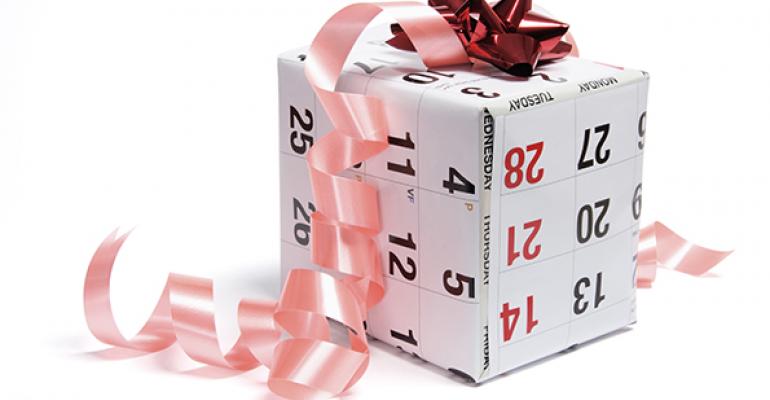Thanks to the Tax Cuts and Jobs Act, the gift and estate tax exemption amount has almost doubled to $11.18 million per person in 2018—as opposed to the $5.6 million exemption amount that initially was released for 2018 pursuant to Revenue Procedure 2017-58.
The new exemption amount is set to continue to increase through 2025 with inflation using the Chained Consumer Price Index for All Urban Consumers. However, the exemption amount is scheduled to revert back to pre-2018 levels adjusted for inflation in 2026. In other words, assuming a 2 percent inflation adjustment, the exemption amount may be cut almost in half to about $6.56 million per person in 2026 under the TCJA.
No Clawback
One major concern with the scheduled change in 2026 is that gifts made between 2018 and 2025 under the TCJA’s increased exemption amount may be subject to some sort of clawback when the exemption amount is reduced.
For example, Amy, a widow, could make a gift of $11 million to a dynasty trust for her children and grandchildren in 2025 without owing any gift, estate or generation-skipping transfer taxes under the TCJA. If Amy dies in 2026, there’s a question of whether her estate would be required to pay taxes on the amount of the prior gift to the extent it exceeds the exemption amount at that time, which could mean a potential tax of 40 percent on close to $4.5 million (assuming a $6.56 estimated exemption amount in 2026).
However, the Treasury and the Internal Revenue Service issued proposed regulations on Nov. 20, 2018, clarifying that individuals who take advantage of the increased gift and estate tax exemption amount from 2018 through 2025 won’t suffer any adverse impact when the exemption amount drops to pre-2018 levels adjusted for inflation in 2026. While the proposed regulation isn’t effective until adopted as final, it’s a good indication that clawback shouldn’t be an issue.
“Use It or Lose It” Benefit
The important thing to remember with the TCJA’s increased exemption amount is that it’s a “use it or lose it” benefit for wealthy families. Not only can individuals now transfer almost double the tax-free amount to their heirs through 2025, all of the appreciation on those gifts will continue to be free of gift, estate and GST tax in perpetuity if a dynasty trust is used in a jurisdiction such as Delaware.
For example, Beth and Carl are a married couple in their early 60s who used up their entire $10.98 million exemption amount in 2017 by making gifts to their children that year. In 2018, they decide to gift an additional $10 million to a dynasty trust for the benefit of their grandchildren and unborn great-grandchildren. Pursuant to the TCJA, the entire additional $10 million gift will be free of any gift, estate or GST taxes. In addition, assuming a 7 percent return, that $10 million trust could grow to $76.12 million over the next 30 years, and the entire amount of the trust will never be subject to gift, estate or GST taxes. Furthermore, if Beth and Carl live in a state with state estate taxes—such as Washington with up to a 20 percent state estate tax—they also would avoid state taxes on the $76.12 million in trust. If the trust is set up to be treated as a grantor trust for income tax purposes—perhaps by including a power of substitution under Internal Revenue Code Section 675(4)(C)—Beth and Carl can continue to pay the income taxes on behalf of the trust, which will lower the amount of assets in their estate that would be subject to estate taxes upon their death and won’t be treated as if they were making additional gifts to the trust under Revenue Rulings 2004-64 and 2008-22. The trust could continue to grow free of income taxes during Beth and Carl’s lifetimes in addition to no gift, estate or GST taxes.
Gift Tax Return
It’s important to remember that individuals are required to file a Form 709, United States Gift (and Generation-Skipping Transfer) Tax Return, to take advantage of the exemption amount. In addition, a professional appraisal may be required to value assets other than cash or publicly traded securities. Individuals interested in making smaller gifts can give up to $15,000 per year to any number of people without tax consequences, using up their exemption amount or reporting requirements, commonly referred to as annual exclusion gifts. Individuals also can pay education or medical expenses directly for others without tax consequences, using up their exemption amount or reporting requirements.
Strategies for Making Gifts
There are numerous estate planning strategies—such as grantor-retained annuity trusts, sales to intentionally defective grantor trusts and charitable lead annuity trusts—that allow your clients to make substantial gifts to future generations while only using a small portion of their exemption amount, which could help ultra-wealthy clients transfer hundreds of millions of dollars tax-free to future generations. In addition, it’s important to analyze which of your clients’ assets will be used for gifts, because assets that won’t be included for estate tax purposes will miss out on receiving a step-up in basis for income tax purposes, which is especially important in community property states where assets such as depreciable real estate receive a double step-up in basis after each spouse’s death.
Don’t Wait
As a final word of caution, clients shouldn’t necessarily plan on waiting until the end of 2025 to make gifts. An earlier gift allows for additional appreciation to be transferred free of gift, estate and GST taxes, and there’s always a possibility that the exemption amount will be reduced some time before 2026. If there’s a political change with Congress and the president during the elections in 2020, there could a significant reduction in the exemption amount in addition to a multitude of other tax changes as early as 2021.





